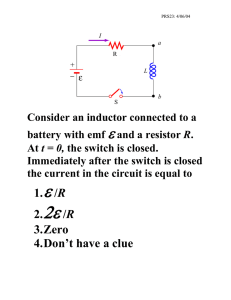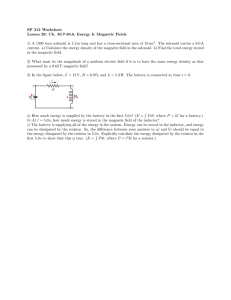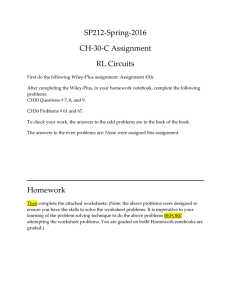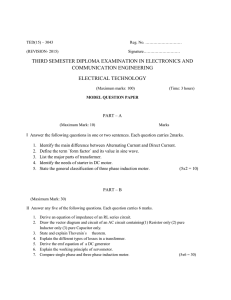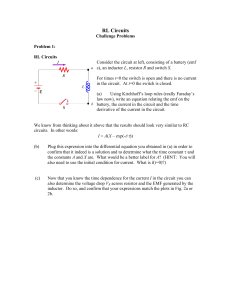Document 13604357
advertisement
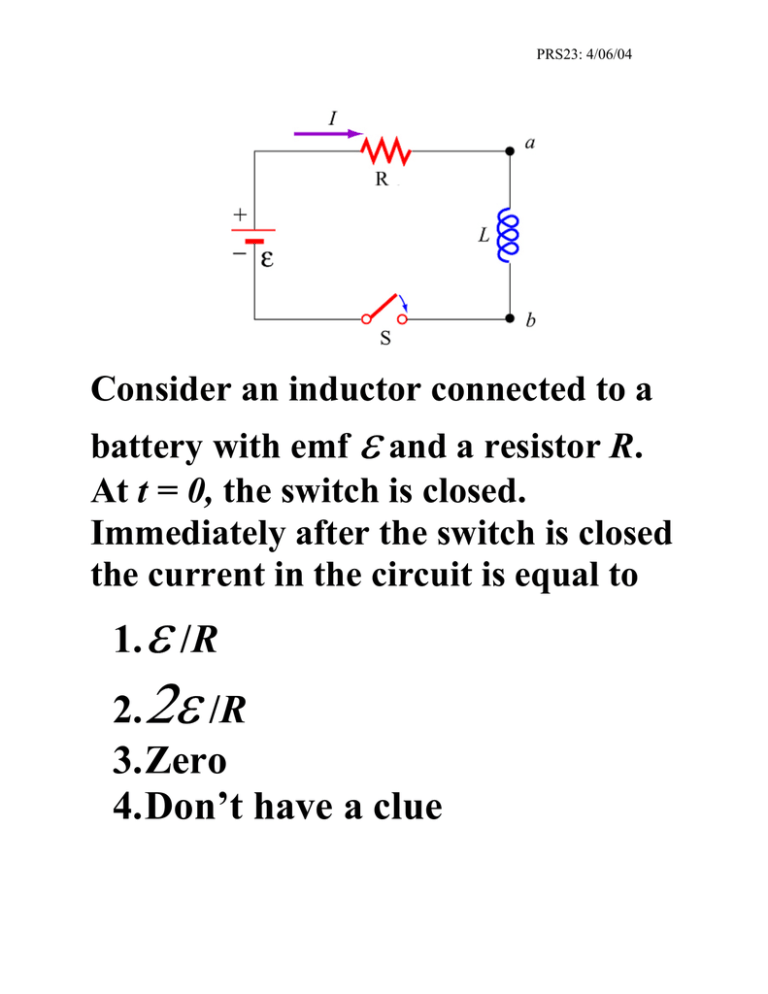
PRS23: 4/06/04 Consider an inductor connected to a battery with emf ε and a resistor R. At t = 0, the switch is closed. Immediately after the switch is closed the current in the circuit is equal to 1. ε /R 2. 2ε /R 3.Zero 4.Don’t have a clue PRS23: 4/06/04 (3) The current is zero just after the switch is thrown. As a function of time: PRS23: 4/06/04 Consider the above circuit, in which the switch S has been closed a very long time. At t = 0, the switch is opened. Immediately after the switch is opened the current in the inductor is equal to 1. ε /R 2. ε /2R 3.Zero 4.Don’t have a clue PRS23: 4/06/04 (1) The current stays at what is was just before throwing the switch. After a very long time, the inductor looked like a wire, so there was just a current ε /R through it. PRS23: 4/06/04 Consider an inductor connected to a battery with emf ε and a resistor R. The switch S has been in position b for a very long time. At t = 0, the switch is thrown to position a. The current I through the resistor for t > 0 is: ε e−Rt/L R − Rt/L ε 2. 1− e R 1. ⎛ ⎜ ⎜ ⎜ ⎜ ⎜ ⎝ ⎞ ⎟ ⎟ ⎟ ⎟ ⎟ ⎠ 3. Zero 4. Don’t have a clue PRS23: 4/06/04 (1) ε e−Rt/L R The current as a function of time looks like: PRS23: 4/06/04 A R=10Ω R=100Ω B A magnetic field B penetrates this circuit outwards, and is increasing at a rate such that a current of 1 A is induced in the circuit (which direction?). The potential difference VA-VB is: 1. +10 V 2. -10 V 3. +100 V 4. -100 V 5. +110 V 6. -110 V 7. +90 V 8. -90 V 9. None of the above PRS23: 4/06/04 (9) None of the above The question is meaningless. There is no such thing as potential difference when a changing magnetic flux is present. This is because by Faraday’s law, a nonconservative ε is induced (that is, its integral around a closed loop is non-zero). Non-conservative fields can’t have potentials associated with them. PRS23: 4/06/04 Driving a Motor Consider a motor (a loop of wire rotating in a B field) which is driven at a constant rate by a battery through a resistor. Now grab the motor and prevent it from rotating. What happens to the current in the circuit? 1. Increases 2. Decreases 3. Remains the Same PRS23: 4/06/04 Driving a Motor – Answer (1) Current Increases When the motor is rotating in a magnetic field an EMF is generated which opposes the motion, that is, it reduces the current. When the motor is stopped that back EMF disappears and the full voltage of the battery is now dropped across the resistor – the current increases. For some motors this increase is very significant, and a stalled motor can lead to huge currents that burn out the windings (e.g. your blender).
